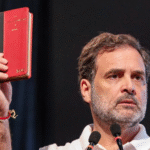1. Introduction: The Financial Landscape of Sports Franchises
In a landmark decision aimed at leveling the playing field and fostering competitiveness, franchises across sporting leagues are now required to spend a minimum of ₹90 crore. This policy not only ensures equitable participation but also reshapes the financial dynamics of leagues, compelling teams to invest heavily in players, infrastructure, and management.
The move reflects the growing influence of economics in sports, where financial strategies are as crucial as on-field tactics. As leagues grow in popularity and revenue streams expand, this mandatory spending cap aligns with the vision of professionalizing sports further.
2. The ₹90 Crore Mandate: An Overview
What the Policy Entails
- Minimum Expenditure Requirement: Franchises must allocate at least ₹90 crore for operational costs, including player salaries, coaching staff, and other essential expenses.
- Salary Caps and Floors: While a salary cap limits overspending, the minimum spend ensures that no team undercuts its financial obligations.
Purpose of the Mandate
- To ensure a competitive balance in the league.
- To prevent teams from underspending and compromising the quality of the competition.
- To foster better player development and infrastructure investment.
3. Impact on Teams: Challenges and Opportunities
Challenges
- Smaller Franchises Struggle:
- Teams with limited revenue streams may face difficulty meeting the minimum spend requirement.
- Over-reliance on sponsorships and external funding might strain their financial stability.
- Pressure to Justify Spending:
- Franchises need to ensure that their investments yield results, both on and off the field.
- Wastage or inefficient allocation of funds could lead to criticism.
- Talent Acquisition Costs:
- With increased spending mandates, the competition for top talent may drive up player salaries disproportionately.
Opportunities
- Enhanced Player Salaries:
- Athletes stand to benefit directly, with higher wages becoming the norm across the board.
- Improved Infrastructure:
- Franchises are likely to invest in better training facilities, stadiums, and support systems.
- Boost to League Competitiveness:
- Uniform spending ensures that no team lags far behind, making matches more exciting and unpredictable.
4. Historical Context: Spending Policies in Sports Leagues
NBA Salary Floors and Caps
The National Basketball Association (NBA) introduced salary floors to ensure fair competition among teams.
- Minimum spending requirements have led to increased parity within the league.
- Teams unable to meet the floor have faced penalties.
European Football and Financial Fair Play (FFP)
UEFA’s FFP regulations aim to prevent clubs from overspending beyond their generated revenue.
- However, the lack of a minimum spend often allows dominant clubs to maintain a financial advantage.
IPL’s Evolution with Spending Caps
- The Indian Premier League (IPL) introduced both salary caps and minimum spending thresholds to maintain competitive balance.
- This model has been lauded for its ability to produce consistently engaging tournaments.
5. How the ₹90 Crore Rule Impacts Players
Increased Earnings
- Players, particularly emerging talents, can expect higher base salaries due to the spending mandate.
- Established stars might secure lucrative contracts as franchises compete for marquee players.
Focus on Development Programs
- Franchises may invest in youth academies and grassroots programs to unearth and nurture talent.
- This creates a sustainable pipeline of skilled players for the future.
Better Support Systems
- Enhanced spending could lead to improved facilities for players, such as better training equipment, medical support, and psychological counseling.
6. League Competitiveness: The Core Objective
Levelling the Playing Field
- Mandating minimum spending prevents wealthier franchises from monopolizing talent.
- It ensures that all teams enter the competition with comparable resources.
Encouraging Risk-Taking
- Teams are likely to explore innovative strategies, such as investing in unproven talents or adopting data-driven approaches to player selection.
Fan Engagement and Experience
- Well-funded teams can create better fan experiences through marketing, stadium upgrades, and engaging match-day activities.
7. Economic Implications: A Broader Perspective
Revenue Redistribution
- The policy could promote equitable revenue sharing, ensuring smaller franchises remain financially viable.

Sponsorships and Branding Opportunities
- With increased spending, franchises become more attractive to sponsors, leading to mutually beneficial partnerships.
Boost to Ancillary Industries
- The mandate could stimulate growth in industries like sports merchandising, broadcasting, and event management.
8. Criticism and Concerns Surrounding the Policy
Risk of Overspending
- Teams might spend recklessly to meet the minimum threshold, leading to financial instability.
Lack of Autonomy
- Franchises may feel constrained by the spending mandate, unable to adopt lean financial models.
Potential for Inefficiency
- Increased funds could lead to complacency, with franchises failing to optimize their investments.
9. Strategies for Franchises to Adapt
Long-Term Planning
- Franchises must adopt strategic financial planning, focusing on sustainable growth rather than short-term gains.
Building Strong Scouting Networks
- Investing in talent identification systems can help teams discover hidden gems and maximize value for money.
Leveraging Technology
- Data analytics and AI tools can guide decision-making in player selection, performance evaluation, and fan engagement.
Diversifying Revenue Streams
- Teams should explore additional income sources, such as merchandise sales, digital content, and corporate partnerships.
10. Case Studies: Lessons from Other Leagues
Mumbai Indians in IPL
- Known for their efficient use of resources, the Mumbai Indians’ success stems from a blend of star power and youth development.
Green Bay Packers in NFL
- Despite being a small-market team, the Packers thrive due to sound financial management and community ownership.
11. Future Outlook: Long-Term Benefits of the ₹90 Crore Rule
Enhanced League Reputation
- A more competitive league is likely to attract higher viewership and sponsorship deals.
Global Talent Magnet
- Increased spending might draw international players and coaches, raising the league’s overall quality.
Sustainability and Growth
- By mandating responsible financial behavior, the league ensures its long-term viability and success.
12. Conclusion: A New Era in Sports Franchise Management
The ₹90 crore spending mandate marks a significant shift in the financial governance of sports franchises. While it presents challenges, the policy has the potential to elevate the quality of competition, enhance player welfare, and ensure sustainable growth.
By embracing innovation and maintaining fiscal discipline, franchises can not only meet the mandate but also thrive in an increasingly competitive environment. As the league evolves, this landmark decision will undoubtedly play a crucial role in shaping its future, ensuring that every team, regardless of its market size, has an equal shot at glory.





